Organizations are leveraging the benefits of IoT (Internet of Things) in many different ways today — including efficiency, safety, monitoring of remote and hard-to-access equipment, and the ability to be more competitive, more responsive to customers, and to ensure processes are in regulatory compliance.
In this post, we’ll look at a number of real world examples to help shed light on the range of benefits and advantages of IoT and the operational enhancements the Internet of Things offers in process, visibility, time management, cost savings and more.
IoT Meets ROI Goals
Our post titled “The ROI of IoT: Show Us the Money” discussed the ROI drivers for IoT and the various ways companies can achieve a return-on-investment. Many IoT projects begin with inquiries into automated processes that can save costs and make things happen faster, better and more accurately. In the case of processes that lead to revenue – or hold up revenue, when they are not completed correctly or on time – balance sheets are at stake. This means the project can show fast ROI by reconfiguring and improving slow or inaccurate manual procedures.
One of most prevalent types of applications in the Industrial IoT (IIoT) is the ability to remotely monitor assets out in the field, which would otherwise require manual visits by personnel. When you have dozens or even thousands of pieces of machinery distributed widely over farmlands or oil fields, or at the tops of city streetlights, getting to them can be impractical and enormously costly.
Oilfield Tank Monitoring Example
Here is one example of how remote monitoring can provide a return on investment. A manager of an unattended oil field needs to make sure distributed oil tanks have adequate dosing chemicals. An IoT solution designed to report on the oilfield dosing can allow personnel to monitor the tanks from an iPad, wherever they may be.
The ROI, in this case, can be enormous. The field personnel do not have to waste time and fuel driving out to all the remote sites in order to see if they need to refill tanks, only to find that they are still half full. Truck rolls are less frequent and far more efficient, as they are sent out only when needed.
The figure below shows the example application, in which sensors on the tanks communicate via radio devices through a gateway to the cellular network and then to applications that collect and display the data so personnel can monitor the tanks remotely and receive alerts for specified conditions.
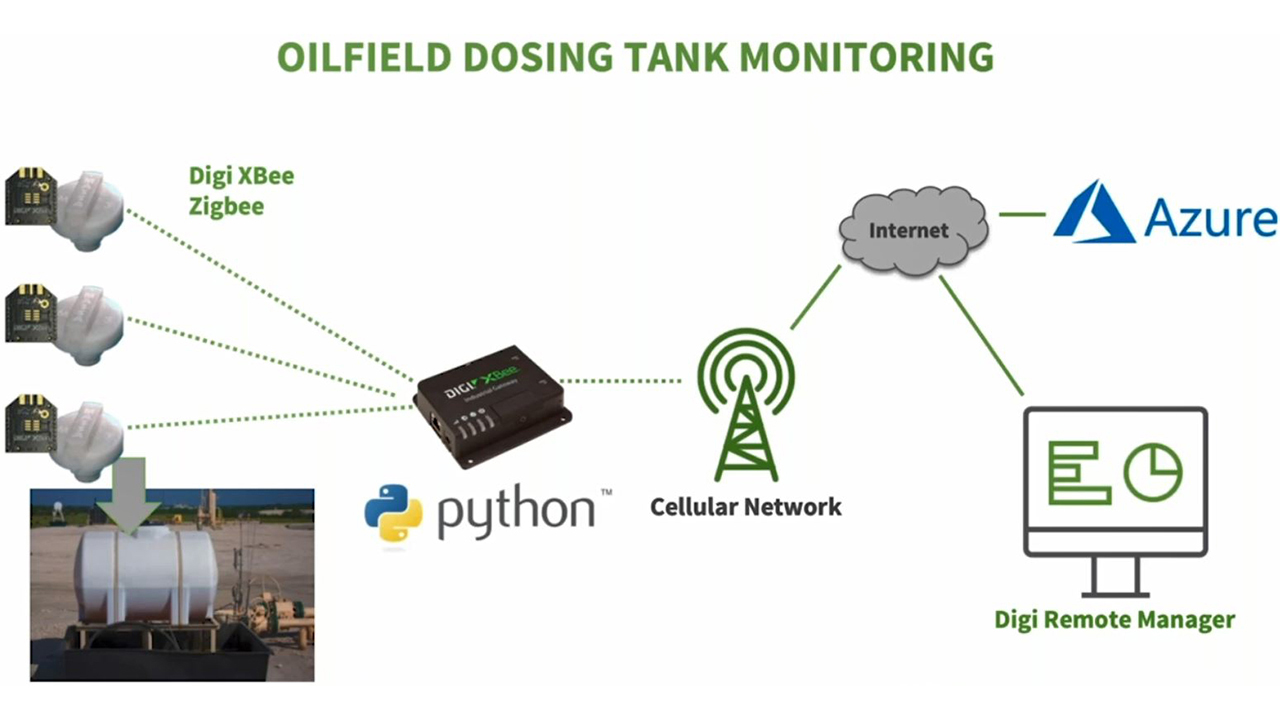
Benefits of IoT in Deployed Application Examples
The many advantages of IoT are best described by those who have deployed an Internet of Things application. Let’s take a look at several examples of IoT deployments where organizations needed to solve a problem, improve inefficiency, or ensure their processes follow regulatory compliance, and how IoT provided the solution.
Predictive Maintenance: Improving Operations and Customer Satisfaction
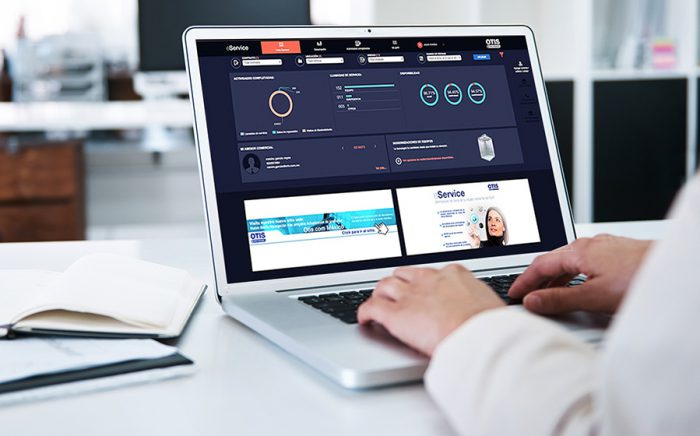
Otis Elevator is a global organization with elevators installed in hundreds of thousands of locations. The company has nearly 33,000 field professionals around the globe to service elevators, keep them running smoothly, and ensure their customers are happy.
To that end, the company developed Otis ONE, an IoT solution to help them continually optimize their response rates. The holy grail for this company was to convert from fast response to predictive response. Otis ONE turns customer equipment data into predictive insights so technicians can stay ahead of potential issues.
They are also better able to pinpoint the problem. The IoT solution delivers important information about all of the elevator’s components – what’s working and what’s not. Therefore, when service is required, service professionals can arrive on site with the right parts and return the elevator to service faster than ever before.
Process Improvement: Increased Efficiency and Cost Reduction
bioFeeder is a company in Ecuador that provides innovative solutions to shrimp farmers that improve processes and lower the cost of doing business.
For shrimp farmers, a key challenge is feeding hundreds of thousands of shellfish dispersed across hundreds or even thousands of hectares of ponds. The feeders are traditionally handled manually and are very labor intensive. It is both costly and difficult to keep to schedules that are optimal for shrimp production; the ideal feeding schedule is every half hour around the clock, which is impossible with manual feeding systems.
The solution was a network of intelligent, solar-powered, and cloud-connected feeders that leverage algorithms designed to optimize the feeding cycle of shrimp, all of which can be managed from a central location.
The ROI is demonstrated very quickly. Because the feed accounts for more than 40 percent of the cost of production on shrimp farms, the efficiency of the system is a game changer. bioFeeder customers are achieving a 100-percent payback in six to 12 months. And meanwhile, workers can redirect their time to other important activities on the shrimp farms.
Automation: Improving Error-Prone Tasks
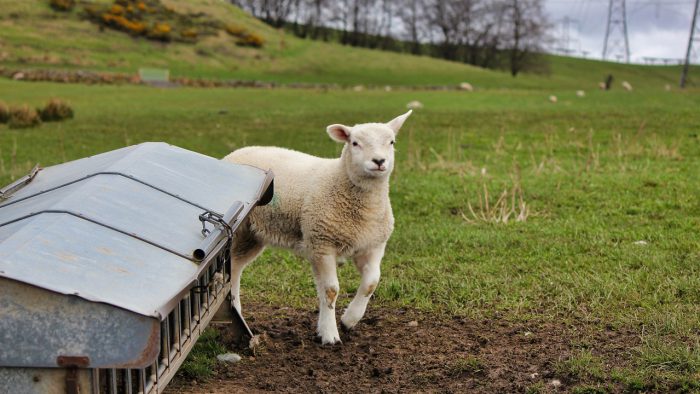
IoT is expanding quickly in agriculture because of the many opportunities for automating processes. Bin Sentry is a company that develops farming solutions to improve efficiency.
They observed that the manual process of checking on feed bins to make sure they are stocked is a cumbersome and error prone manual process. Inaccurate orders and delays in checking the bins until they are nearly out causes feed mills to scramble to handle rush orders. The downside was inefficient truck rolls as well as loss of livestock.
The solution was the first battery-operated, solar-powered feedbin monitor that is designed to replace the mundane and error-prone task of checking feedbins with automation and accuracy. The system involves setting up a network of low-cost, Internet-connected, energy-efficient sensors.
The ROI is excellent. Previously, most feed mills were getting feed data only once a week. But the BinSentry application can send data and diagnostics from the device six times a day, and even if there’s a total power solar-cell failure, there’s 90 days of backup battery power.
IoT Insights: Gaining Intelligence at the Edge
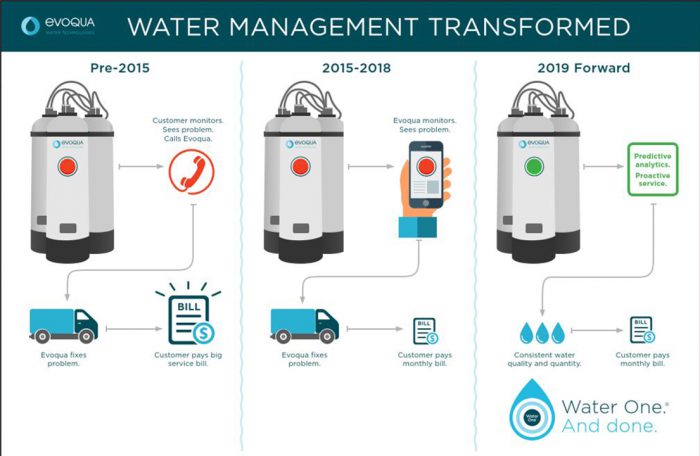
Evoqua Water Technologies developed a system where a cellular module connects to Microsoft Azure and uses machine learning to gain insights into the operation of the distributed systems. The system gathers monitoring results and presents them on Evoqua’s cloud-based platform.
The solution was a response to their customers’ needs for greater insights. They wanted to know the actual analog readings, and they wanted pressure sensors and other data across all of their water systems. And Evoqua wanted to ensure that they could provide predictive insights and respond to customers quickly.
The new system delivers all of these insights, which enables customers to better manage their systems, improves customer satisfaction, and provides the opportunity for Evoqua personnel to proactively maintain equipment.
Temperature Monitoring: Food Safety and Regulatory Compliance
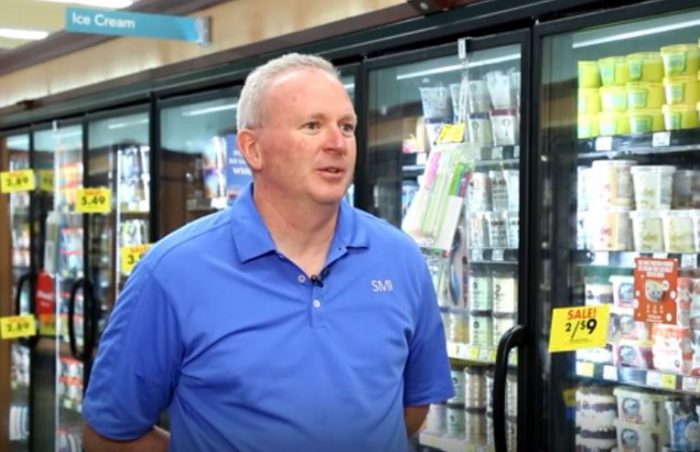
“Cold chain” is a term that refers to supply chain systems that must be monitored and managed within specified temperature ranges. This aspect of supply chain spans the continuum from production to packaging, shipping, delivery, processing and final sale, and includes everything produced in the food industry as well as pharmaceuticals.
All along the way, the items must be maintained within those required temperature ranges, and each location where the items are stored or processed must log the temperatures on a specified schedule to remain in compliance.
Because of the huge need in the cold chain industry for solutions that support compliance and safety, and the problems involved in manually logging processes, Digi established the SmartSense by Digi division, which provides solutions for monitoring and automated logging for the food, pharmaceutical and trucking industries.
Check out the video on the SmartSense grocery page page describing the experience of professionals at Schnuck’s grocery. Having installed SmartSense solutions in their stores, they reduced the time devoted to the monitoring and logging tasks from hours to minutes a day, and also obtained peace of mind that their logs were accurate and in compliance.
PTC: Passenger Safety and Regulatory Compliance
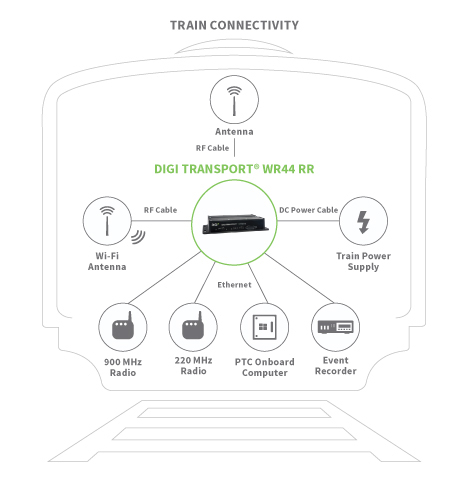
The Southeastern Pennsylvania Transit Authority (SEPTA) is highly committed to passenger safety. Faced with the U.S. Federal mandate for Positive Train Control (PTC), they were eager to comply.
PTC is a sophisticated train-signaling system designed to prevent crashes, derailments and track worker injuries resulting from speed and signal violations. In a PTC environment, connected equipment monitors and controls train movements and speeds, preventing the train from moving unless on-board computer equipment receives a positive indication (from a centralized dispatching authority) that it is safe to travel.
The system incorporates several IoT devices that manage the connectivity and communications behind the system, including a cellular router that works in combination with dedicated trackside fiber and 220 MHz radios to form a failsafe communication network. The increased network reliability and rail system visibility extends the performance beyond PTC, toward Communications-Based Train Control (CBTC), which leads to more efficient scheduling, increased capacity and fuel savings.